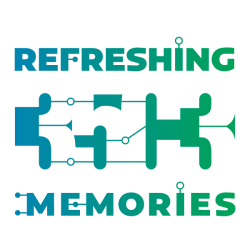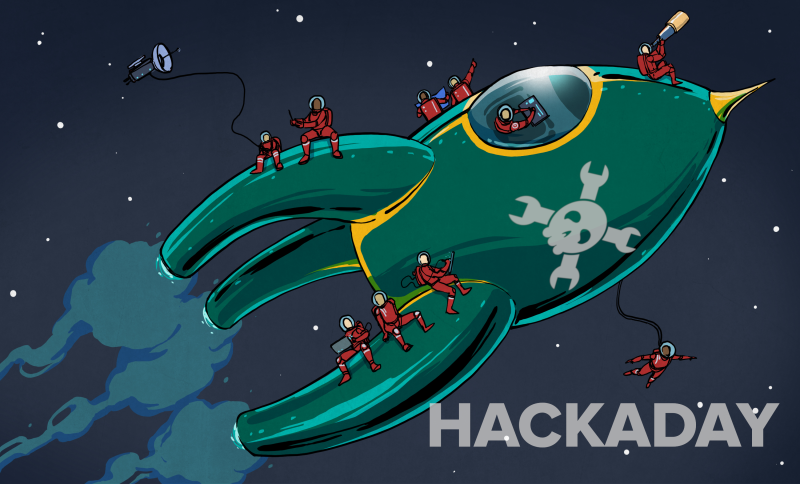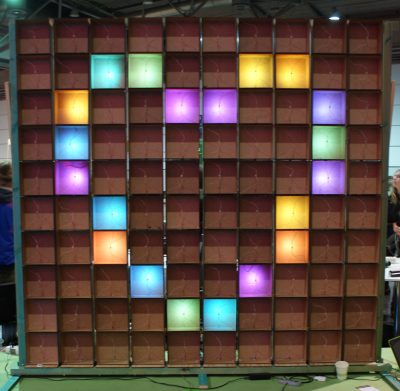Every year for the past 35 years, the German Chaos Computer Club has met just after Christmas for a few days of “Spaß am Gerät” — having fun with the machines. And that’s everything from trying to bring an old PDP-8 back into running condition to forging new software to replace the old and busted social media platforms that permeate our lives. The sum total of around 17,000 people doing the nerdy stuff that they love, and sharing it together, is both amazing and inspiring. Four days of little sleep and much socializing later, I bet there was still another four days’ worth of stuff to see.
 The official theme this year was “Refreshing Memories” which honestly sounds a bit too much like a cola slogan, but was a great opportunity to think back on the hacks of the past that got us where we are. Assemblies put up shrines to their hacker heroes of the past. Retro computers were everywhere, in the talks and on the floor. This year’s Congress was a great time to look back and remember, but also to create new memories for the future. On that front, it was a total success.
The official theme this year was “Refreshing Memories” which honestly sounds a bit too much like a cola slogan, but was a great opportunity to think back on the hacks of the past that got us where we are. Assemblies put up shrines to their hacker heroes of the past. Retro computers were everywhere, in the talks and on the floor. This year’s Congress was a great time to look back and remember, but also to create new memories for the future. On that front, it was a total success.
But the unofficial theme this year was “Smooth Running”. Everything went very well, which is no small feat considering that the infrastructure, decoration, security, and even the medical response teams are from the Chaos community. It’s the depth of engagement that makes this work: of the 17,000 people who showed up, just over 4,000 of them volunteered for “angel” shifts — meaning they helped guard the doors, staff the info desks, or build up or tear down. It was the largest ever CCC, and you could feel it, but they pulled it off, and then some.
The angels are geeks just like you and me, and since everything went so smoothly, they had time to play. For instance, the phone operations people offer DECT phone service so that attendees can bring in their home phones and use them at Congress. In years past, the lines to register and enroll phones were painfully long. This year, it all happened online, and the result is that the phone ops crew got bored. That explains how they had time to establish roaming home-phone wireless service in some of the normal Leipzig city trams. Wait, what?
Show and Tell? Nope. Come and Do!
The hacker ethic permeates CCC: it isn’t just attended by the participants, it is the participants. Two giant halls were dedicated to “assemblies” — hackerspaces or interest groups or simply groups of people who get together. And the assemblies are probably still the heart and soul of the Congress — one of the “C”s in CCC stands for “Communication” after all, and it’s the assemblies where you can catch up with friends and meet new ones. And it’s in the assemblies that I spent most of my time this year.
While there’s no debating that some of the assemblies brought awesome finished work with them, I love to see all of the assemblies who show up with not-yet-complete projects and spend at least some time during the Congress working together. Want to know what hackers do when they get a few days free? Hack.

[Dave Darko] had a slew of his custom badges on hand, including one that he made for the conference. In true Chaos spirit, it didn’t have any firmware written yet — it was just a blank, multi-radio slate. So he handed a bunch out to [SpaceHuhn] and the rest of the Innsecure crew for them to hack on. Let’s see what they come up with. [Alex] was working on layout and parts sourcing for even tinier LED matrixes! And Prof. Fartsparkle was building a soundboard to add noises to his scooter.
I brought a project — a honeycomb shaped bee-eye of sixteen photoresistors and a matching display — that I had just whipped together the night before leaving home. Needless to say, the firmware wasn’t yet written and I ran into a brick wall after working on it for a couple hours on the train ride up. In one of those only-at-Congress moments, I went off to find [Mattias] who wrote the Forth system that I use for projects like this. He solved my problem in a jiffy, and then we were on to talking about everything from LEDs as wavelength-dependent light sensors to his recently completed Ph.D. in biophysics.
Another nearby assembly was putting together a fantastic addressable pixel array out of laser-cut wooden blocks. Everything was put together on-site, and as far as I know a lot of the graphics were programmed on the last day of the Congress. (You can’t see it here, but the wall is entirely modular and each block connects to the next using acorn nuts and washers for both physical support and electrical contact. Very clever!) Other assemblies brought 3D printer farms, entire kitchens, or vintage computers to be brought back to life. Work was in progress.
We were nearby the Hardware Hacking meta-assembly, where [Mitch Altmann] was holding down a seemingly endless series of beginner-oriented workshops, [Piotr Esden-Tempski] was giving his FPGA workshop based on his iCEBreaker boards that he gave at Supercon, [Kliment] was teaching the gospel of skillet-based reflow soldering, and [Helen Leigh] was teaching an overflow crowd how to make flexible fabric sensors. Solder was melting and code was being typed or debugged all around, 24 hours per day. And this was just in one hall; the other had a self-made vehicle racetrack!
In short, the assemblies at Congress are like a well-running meta-hackerspace where everyone brings their projects in whatever state, gathers together, brainstorms together, debugs together, and simply enjoys hacking. It’s too bad that it can only be four days per year.
Talks? Projects?
Oh yeah, there were talks too. At the Hackaday assembly, we projected one of the five simultaneous talk tracks on the wall, but still there was no way to take it all in. Fortunately, everything’s available online, and in translation if you’d like. We’ve covered a few so far, but we’ll be writing up a few more in the coming weeks, so stay tuned.
(Bonus audio tracks! Want to hear the pneumatic robot or the bells/light sculpture in action?)
We also stumbled on a few projects that need to be covered Hackaday-style, and some of them are seen in the picture gallery. And if you were at 35C3 and you saw something amazing that you think we should write up, let us know!








































The Innsecure assembly was prominently featured in the news thanks to everyone buying a picture from the DPA instead of coming to the congress.
Evidence of it https://twitter.com/deantonious/status/1078447928837062663
Anyone got a link to the flipdots? I couldn’t find it on Google.
You should ask Jo
https://twitter.com/HobbyIngenieur/status/1079137557177344000